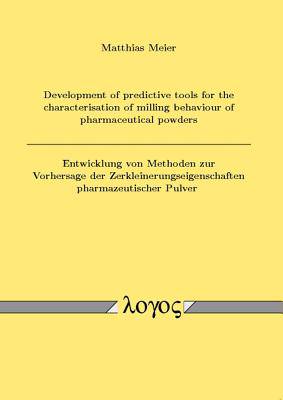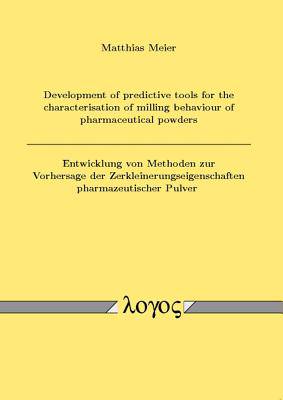
- Afhalen na 1 uur in een winkel met voorraad
- Gratis thuislevering in België vanaf € 30
- Ruim aanbod met 7 miljoen producten
- Afhalen na 1 uur in een winkel met voorraad
- Gratis thuislevering in België vanaf € 30
- Ruim aanbod met 7 miljoen producten
Zoeken
Development of Predictive Tools for the Characterisation of Milling Behaviour of Pharmaceutical Powders / Entwicklung Von Methoden Zur Vorhersage Der Zerkleinerungseigenschaften Pharmazeutischer Pulver
Matthias Meier
Paperback | Engels
€ 87,45
+ 174 punten
Omschrijving
This work examines the main influence factors on the breakage behaviour of pharmaceutical substances and other organic crystals. Particle surface characterisation is done via Atomic Force Microscopy, thus examining the transport properties of the powders. The breakage behaviour is characterised by single particle impact experiments. Mechanical properties are determined by indentation. The results show a clear correlation between the breakage behaviour -- expressed by the breakage probability and the breakage function -- and the hardness and fracture toughness of the material. This allows an estimate about the breakage behaviour of a substance from indentation experiments with far less material consumption than in conventional milling experiments.
Specificaties
Betrokkenen
- Auteur(s):
- Uitgeverij:
Inhoud
- Aantal bladzijden:
- 185
- Taal:
- Engels
Eigenschappen
- Productcode (EAN):
- 9783832526177
- Verschijningsdatum:
- 30/09/2010
- Uitvoering:
- Paperback
- Formaat:
- Trade paperback (VS)
- Afmetingen:
- 145 mm x 211 mm
- Gewicht:
- 198 g

Alleen bij Standaard Boekhandel
+ 174 punten op je klantenkaart van Standaard Boekhandel
Beoordelingen
We publiceren alleen reviews die voldoen aan de voorwaarden voor reviews. Bekijk onze voorwaarden voor reviews.











